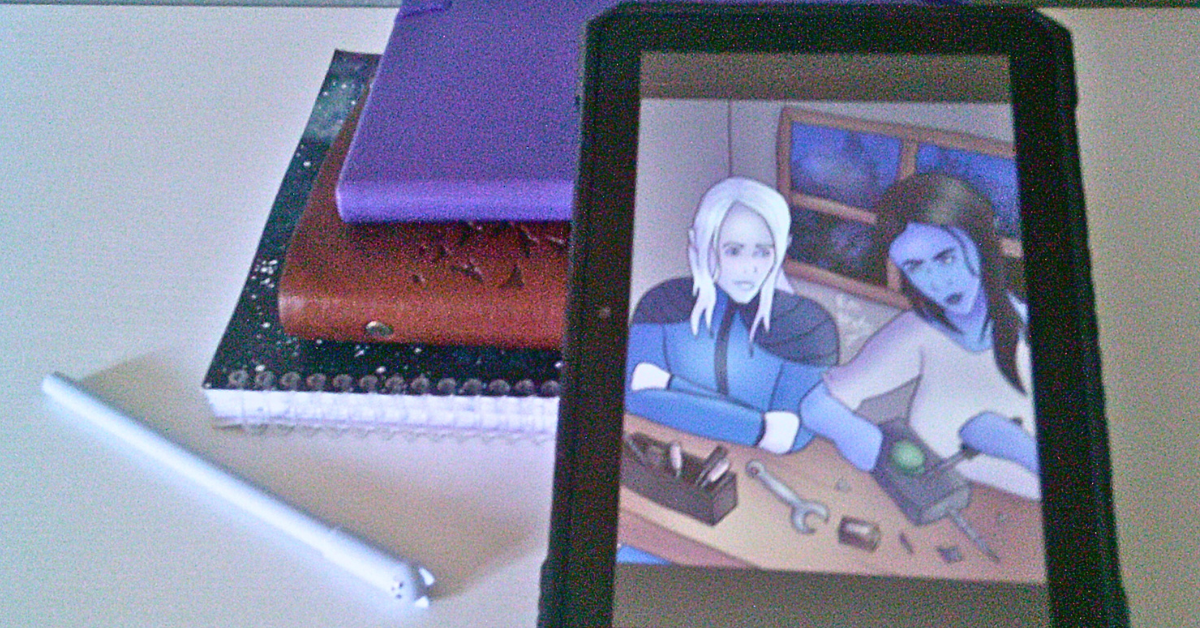Intro
Whether they’re best friends, romantic partners, or mentor and mentee, I’ve always loved writing partners. Part of it probably comes from the fact that partners are a pretty common theme in the stuff that I like, but another part of it is just that they’re really fun to write. Two characters who are always fighting side by side—literally, metaphorically, or both—and who trust each other like they trust no one else, who would follow each other to the ends of the earth and gladly die for each other…
Maybe it doesn’t always have to be that intense, but I tend to have a flair for the dramatic, so that’s usually a pretty accurate description for the partners in my work. Regardless of how deep the partners’ bond goes, there are some basic things that I consider whenever I’m making two characters that I know are going to be partners. These are the things that I’m going to be discussing in this article.
Partner Personalities
While there’s no rule that says this has to be the case, partners often have contrasting personalities when we see them in fiction. You know the drill: One character is goofy, while the other is serious, one character is outgoing while the other is shy, etc. I love these sorts of dynamics, so pretty much every pair of partners that I create is built around these sorts of ideas.
There are a lot of things that the contrasting personalities can add to the story. Originally, the main reason why I did this was to add an extra little comedic element to the story; two characters who are very different from each other are bound to have some funny interactions, and their antics can help lighten the mood and make the story that much funner to read. Along with that, their differences can also add some tension to the story; maybe they frequently come into conflict, and there are points when you have to stop and wonder if their disagreements could bring their whole mission crashing down.
But, to me, the best thing about writing conflicting personalities is the contrast itself. By doing things like having them disagree or react differently to something, you can kind of have them act as each other’s foil, highlighting each other’s strengths and weaknesses, and also just making each other’s personalities feel more vibrant by giving you something to compare them to.
So, usually, when I’m creating a pair of partners, I start out by just thinking of two basic personality traits that are opposites—things like cheerful and grumpy, goofy and serious, bold and timid. These traits serve as the base for the characters, and I just build on them from there, keeping that basic trait in mind as I add more traits and nuance until, eventually, I’ve got two characters who are ready to move on to the next step in their creation process.
Partner Strengths and Weaknesses
When you’re writing a group of characters—regardless of that group’s size—you always want to make sure that every character is distinctive, with their own personalities, yes, but also with their own strengths and weaknesses.
A lot of the time, when you see partners in fiction, they have complementary strengths and skills that help them achieve their goals. You know, like the classic one character is physically strong, and the other is smart, and both of their skills are needed to complete their mission.
That both their skills are needed to complete their mission part is important, because you want to make sure that both characters feel necessary for the plot, and you don’t want one character to be the one carrying the whole mission, or else it would be pointless to give them a partner in the first place. This is something that can be easy to overlook, especially if one of the characters is significantly more experienced than the other or if you, the writer, have a favorite of the pair, but it’s crucial that both characters have a chance to utilize their skills. You don’t need to have both characters be equally important—if one of them is the main character, for example, then of course their partner is going to be a little less important than them—but they should both be relevant and vital to the plot in some way, even if one of them is more so than the other. You just need to build your plot in such a way that they both have a chance to shine. (Or, if you start with the plot instead of the characters, build the characters in such a way that they’re both necessary. But that feels backward to me, because I pretty much always start with the characters and then form the plot around them.)
When I’m coming up with partner strengths and weaknesses, I usually look to the characters’ personalities for inspiration. Like, say that one of them is friendly and confident—maybe that makes them charming, which makes them good with social interactions that could be vital to the plot. That’s one of their strengths. But, maybe one of their weaknesses—or flaws, if you prefer to think of it that way—is that they’re also kind of gullible. As for their partner, maybe they’re not particularly charming—that’s one of their weaknesses—but one of their strengths is that they’re smart and know not to take everything at face value. So, when their charming-but-gullible partner shares what they learned from their information gathering, the smart-but-unpleasant one can help discern if what they’ve been told seems suspicious or not. Because both of them are strong where the other is weak, this makes their overall partnership feel stronger, and makes them both feel necessary.
This is a kind of dramatic example, where their strengths and weaknesses are polar opposites, and you don’t always have to make it so extreme or cliche. While I usually have it so that one partner is very good at something that the other is very bad at and vice versa, most of their strengths and weaknesses are usually not complete opposites of each other. Sometimes, they even have a few strengths and weaknesses in common. But, while it is perfectly fine for them to have some shared skills and weaknesses, you definitely want them both to have ones that are different too, just to help make them more distinctive and unique from each other.
Romantic Partners
While I generally don’t think about romantic partners all that differently from how I think of any other sorts of partners—I follow all the same steps I talked about earlier—there are obviously some extra things that I need to keep in mind when I’m writing them. They’d be a lot more intimate than any of the other sorts of partners I mentioned—whatever intimate might mean for them—and I also need to know how far along in their relationship they are. (Because things are obviously going to be different between them depending on whether they’ve just started dating or have been married for years.) And, if the romance is supposed to advance or change in any way during the story, I’m also going to have to decide how so, and how I’m going to get to that point.
I also take a little extra care to make sure that no single partner seems like they’re more “in charge” than the other one is when I’m writing romantic partners. There are no alpha-anythings in the romance in my stories, because I think it’s kind of an unhealthy mindset for both people involved, so it’s not something I want to promote or romanticize. Obviously, there will always be times when one person is kind of taking the lead or has to protect or console the other one, but, if the relationship is supposed to be a healthy one, neither of them should always have the same role. They should both have a chance to be the “strong one”, and they should both have a chance to be the “weak one.” And it should be relatively balanced so no, just having a couple scenes where the FMC is listening to the MMC vent about his tragic past while all the rest of the book is about him protecting her does not count.
Other than extra stuff like that, I don’t treat romantic partners very differently from other types of partners. I think I like to emphasize the partners part of romantic partners more than a lot of other writers do. Yes, they’re romantic, and yes, they do all the kissing and flirting and all that, but—probably partially because my stories are usually more about the action than the romance—I always want to make a point of showing that they’re partners in more than just romance, but also in life in general. (No, I don’t care if it sounds cheesy.)
Outro
Partners have always been one of my favorite things to write, so I hope you found this interesting. Thank you for reading, and be sure to check back next month for the next writing post.












